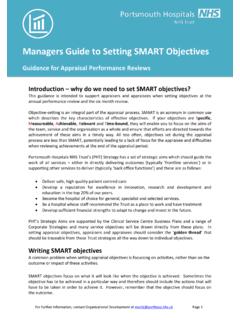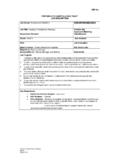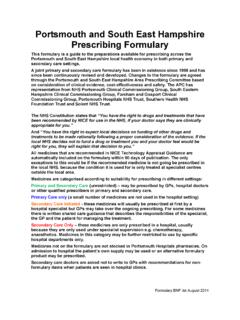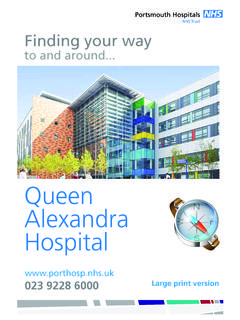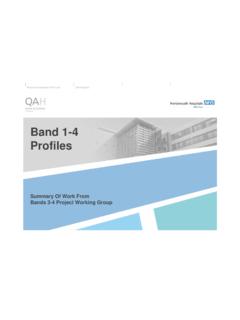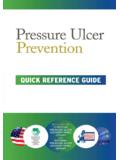Transcription of Pressure Ulcer Grading Tool - porthosp.nhs.uk
1 Back of headAlong spineElbowsHipsSacrumButtocksAnkle bone HeelsMedical Illustration ref: 12/0951If Pressure damage is present on admission or occurs during admission, complete Adverse Incidence Report and inform Tissue Viability on ext 6985. Implement Pressure Ulcer management and prevention strategy ongoing assessment, repositioning, care plan and in accordance to the European Pressure Ulcer Advisory Panel, 2009Or anywhere else on the bodyHow to grade the Pressure ulcerGrade/Catagory 1 Non-blanchable erythema - Intact skin with non-blanchable redness (does not blanch under normal finger Pressure ) usually over a bony prominence.
2 Darkly pigmented skin may not have visible blanching; its colour may differ from the surrounding area. The area may be painful, firm, soft, warmer or cooler as compared to adjacent tissue. Category or Grade 1 may be difficult to detect in individuals with dark skin tones. May indicate at risk 2 Partial thickness - Loss of dermis presenting as a shallow open Ulcer with a red pink wound bed, without slough or bruising*. May also present as an intact or open/ruptured serum-filled or sero-sanguinous filled blister. This category or grade should not be used to describe tears, tape burns, incontinence associated dermatitis, maceration or excoriation.
3 * Bruising indicates deep tissue injury. slough. Grade/Catagory 3 Full thickness skin loss - Subcutaneous fat may be visible but bone, tendon or muscle are not exposed. Slough may be present but does not obscure the depth of tissue loss. May include undermining and tunneling. The depth of a Category or Grade 3 Pressure Ulcer varies by anatomical location. The bridge of the nose ear, occiput and malleolus do not have (adipose) subcutaneous tissue and Category or Grade 3 ulcers can be shallow. In contrast, areas of significant adiposity can develop extremely deep Category or Grade 3 Pressure ulcers.
4 Bone/tendon is not visible or directly palpable. Grade/Catagory 4 Full thickness tissue loss - With exposed tedon or muscle. Slough or eschar may be present. Often includes undermining and tunneling. The depth of Category or Grade 4 Pressure Ulcer varies by anatomical location. The bridge of the nose, ear, occiput and malleolus do not have (adipose) subcutaneous tissue and these ulcers can be shallow. Category or Grade 4 ulcers can extend into muscle and/or supporting structures (eg fascia, tendon or joint capsule) making osteomyyelitis or osteitis likely to occur.
5 Exposed bone/muscle is visible or directly Ulcer Grading ToolInspect the following locationsfor skin damag
